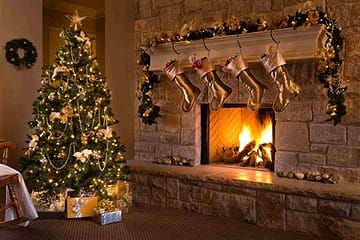When it comes to pots and pans, there are so many different options. With so many to choose it can be a very difficult decision to pick the perfect pans for your lifestyle and kitchen. From stainless steel to non-stick coatings, each type of cookware has its own pros and cons. In this review, I’ll be taking a closer look at some of the most popular types of pots and pans on the market today. They are essential tools that allow for precise temperature control and even heat distribution. Without pots and pans, it would be difficult to cook many dishes that require specific cooking methods such as sautéing, boiling, or frying. So, let’s dive in and find the perfect pots and pans for your household.

First up, let’s talk about stainless steel pots and pans.
I love cooking with stainless steel and my favorite brand of all time is All-Clad. The reason for this is that this type of cookware is known for its durability and versatility. It’s great for searing meats and sautéing vegetables, and it can even go in the oven. However, stainless steel can be a bit tricky to clean, and it’s not the best choice for cooking delicate foods like eggs.
Stainless steel cookware is a popular choice for many home cooks and professional chefs alike. It is made from a combination of metals, including iron, carbon, and chromium, which gives it its signature durability and resistance to rust and corrosion.
Stainless steel cookware is also non-reactive, meaning it won’t interact with acidic or alkaline foods, which can affect the taste and quality of your dishes. Additionally, stainless steel cookware is easy to clean and maintain, and can be used on a variety of stovetops, including gas, electric, and induction. Some popular brands of stainless-steel cookware include All-Clad, Calphalon, and Cuisinart.
Next, we have non-stick cookware.
Next, we have non-stick cookware. This type of cookware is coated with a special material that prevents food from sticking to the surface. It’s great for cooking eggs, pancakes, and other delicate foods. Alot of people love non-stick cookware because it is very easy to clean.
However, non-stick cookware can be prone to scratching and peeling, and it’s not as durable as stainless steel. Non-stick cookware is a type of cookware that has a special coating that prevents food from sticking to the surface. This coating is typically made of a material called polytetrafluoroethylene (PTFE), which is also known as Teflon.
Non-stick cookware is popular because it makes cooking and cleaning up much easier. However, there are some concerns about the safety of non-stick cookware, as the PTFE coating can release toxic fumes when heated to high temperatures. Some manufacturers have started using alternative coatings that are considered safer, such as ceramic or diamond-infused coatings. Overall, non-stick cookware can be a convenient and useful addition to any kitchen. However, it’s important to choose a high-quality product and use it safely.
Cast iron cookware is another popular option.
Cast iron cookware is known for its ability to retain heat, making it great for cooking stews and soups. It’s also extremely durable and can last for generations if properly cared for. However, cast iron can be heavy and difficult to maneuver, and it requires a bit of maintenance to keep it in good condition. Cast iron can rust if not properly taken care of and can cause a brown residue if not carefully cared for.
Cast iron cookware is a type of cookware that is made from cast iron… which may or not be obvious by the name. It has a great ability to retain heat, making it a popular choice for cooking. Cast iron cookware is often used for frying, baking, and roasting. It can be used on a variety of cooking surfaces, including gas, electric, and induction stovetops since it is heavy it can damage some surfaces. Cast iron cookware is also known for its non-stick properties, which can be enhanced by seasoning the cookware with oil. Overall, cast iron cookware is a versatile and reliable choice for home cooks and professional chefs alike.
When it comes to choosing the right pots and pans for your kitchen. Here are a few things to keep in mind.
Let’s face it… choosing the right pots and pans can be a daunting task. However, it does not have to be but it is important to consider a few key factors. Firstly, you should consider the type of cooking you will be doing. For example, if you plan on searing meats, you will want a pan that can handle high heat. Secondly, you should consider the material of the cookware.
Stainless steel is a popular choice for its durability and non-reactive properties, while copper is excellent for its heat conductivity. Lastly, you should consider the size and shape of the pots and pans. It is also best to consider their compatibility with your stove or cooktop.
First, consider the types of foods you like to cook and the cooking methods you prefer. If you’re a fan of searing meats and sautéing vegetables, stainless steel might be the way to go. When making pancakes and eggs, non-stick cookware is a great choice. If you are anything like me and enjoy slow-cooked stews and soups, cast iron will be the perfect fit.
In conclusion, pots and pans are an essential part of any kitchen.
Whether you’re a professional chef or a home cook, having the right cookware can make all the difference. So, take some time to consider your options and choose the pots and pans that are right for you.
Pots and pans are indeed an essential part of any kitchen. They come in a variety of shapes and sizes and are used for a wide range of cooking tasks. For example, a small saucepan might be used for heating up soup or making a sauce. While a large stockpot might be used for making a big batch of soup or stew. It’s important to choose pots and pans that are appropriate for the type of cooking you plan to do. As well as the size of your family or the number of guests you typically cook for. Additionally, it’s important to consider the material of the pots and pans. Different materials have different properties that can affect the cooking process. For example, stainless steel is a popular choice for its durability and even heating. While copper is known for its excellent heat conductivity.
FAQ:
Q: Can I use non-stick cookware on high heat?
A: It’s generally not recommended to use non-stick cookware on high heat. Extreme heat can cause the coating to break down and release harmful chemicals. Young kids learning to cook love to burn stuff when experimenting with cooking. Stick to medium or low heat when using non-stick cookware. Generally, with young ones around I would steer clear of non-stick cook wear. Not only that kids are hard on the surface which when scratched can cause you to become sick.
Q: How do I clean stainless steel cookware?
A: To clean stainless steel cookware, use a non-abrasive cleaner and a soft sponge or cloth. Avoid using steel wool or other abrasive materials, as these can scratch the surface of the cookware.



